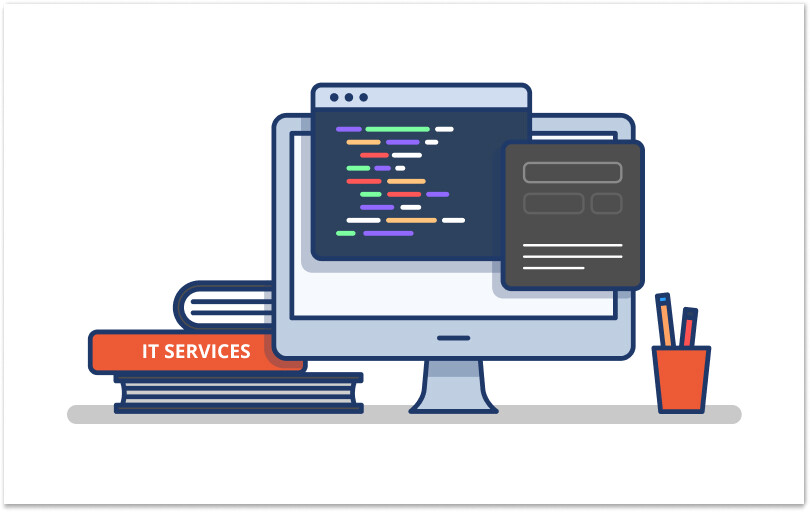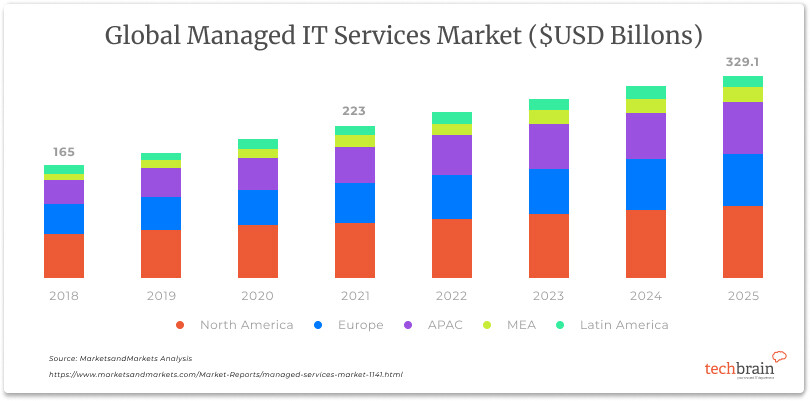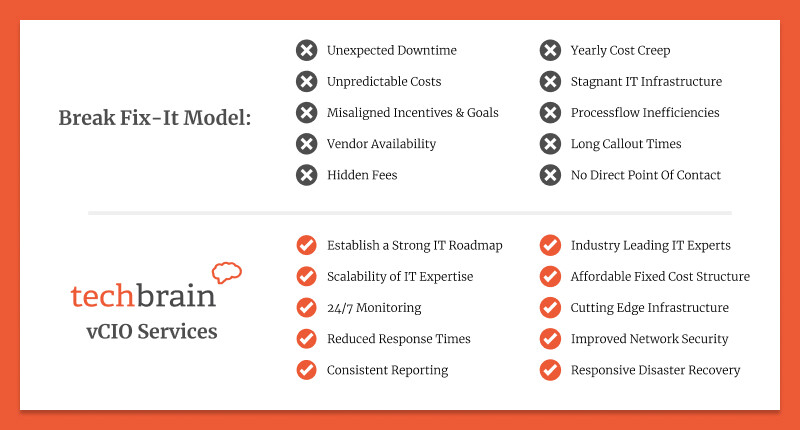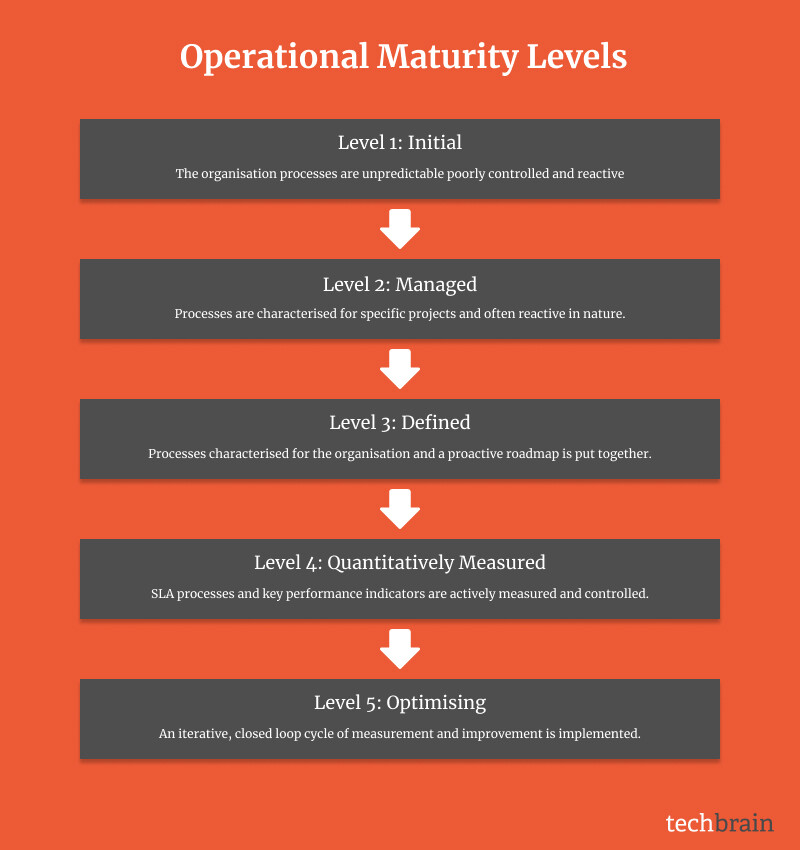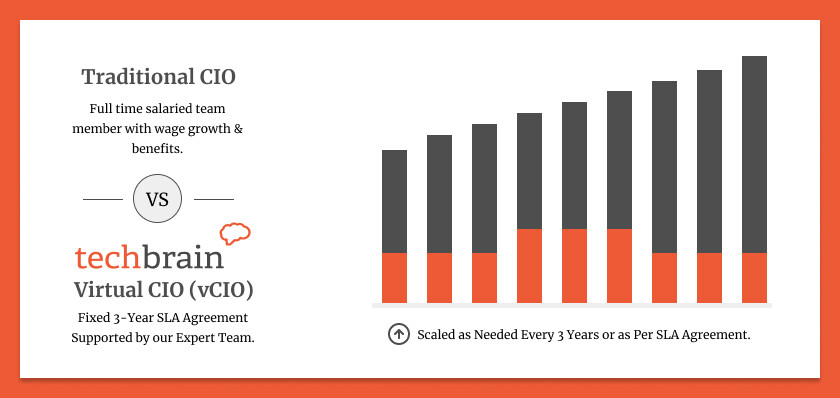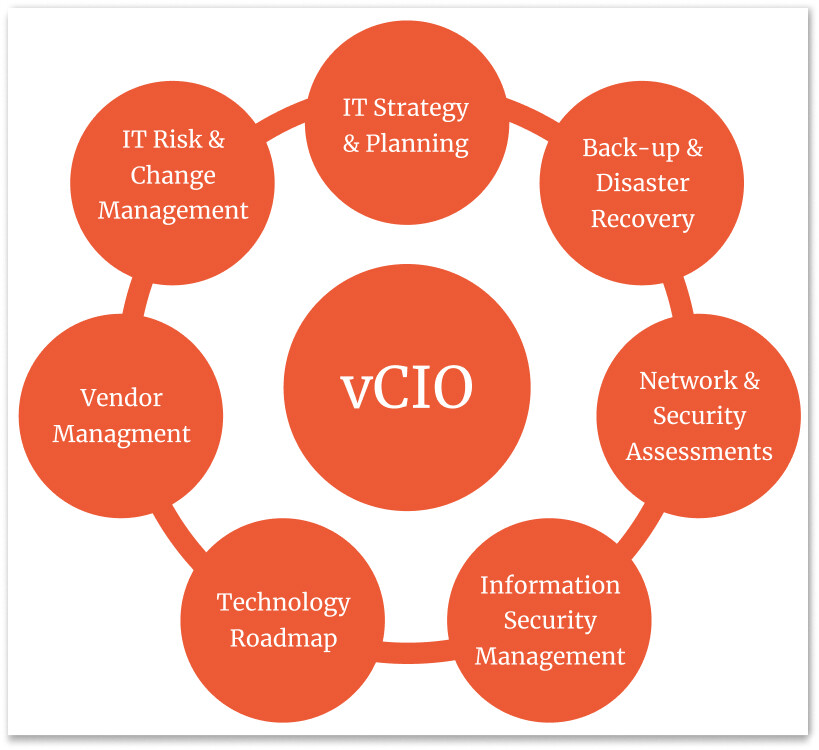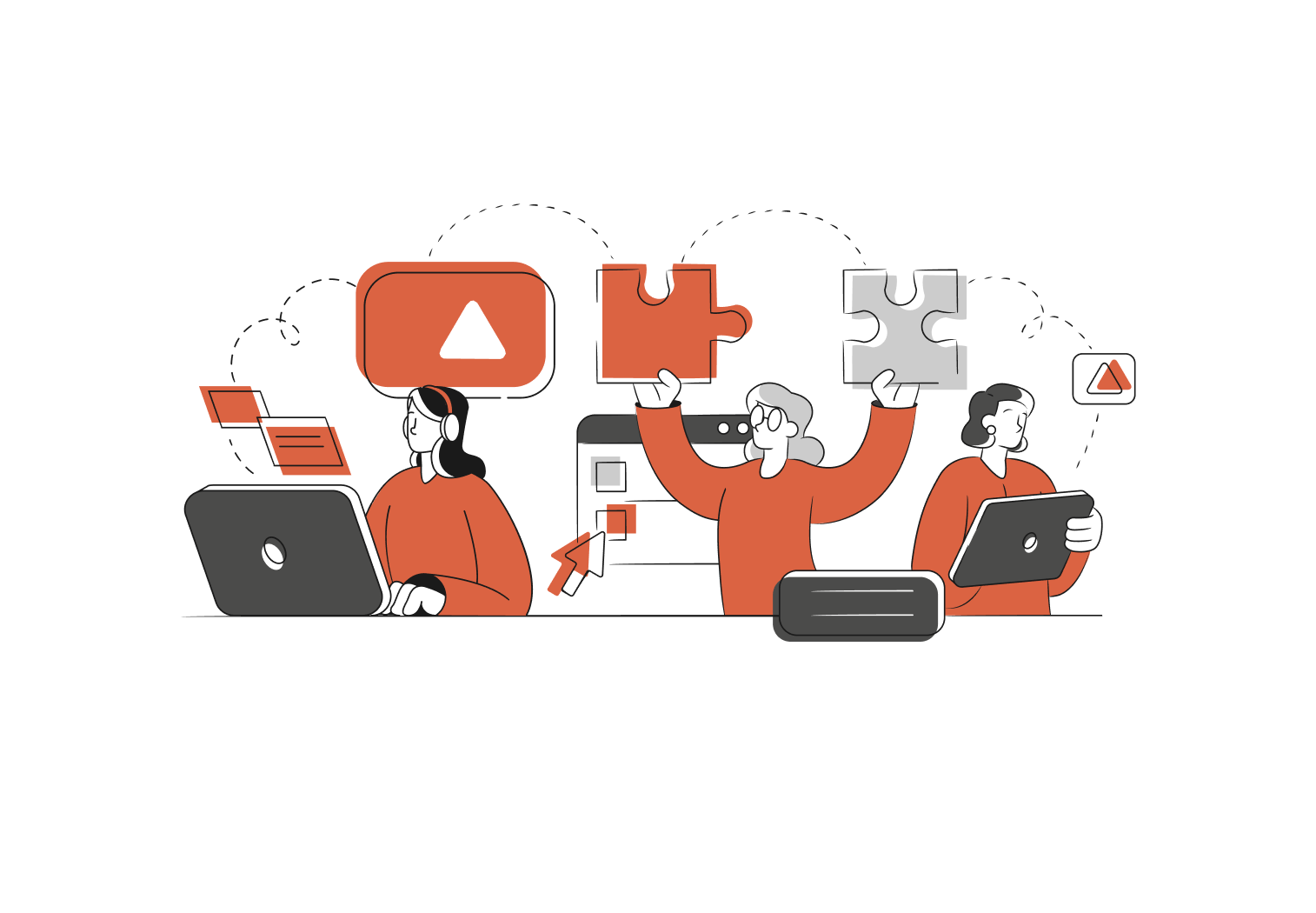In this article
A vCIO appeals to business owners in many ways. Virtual CIOs not only bring in years of skill, knowledge and IT experience into a business, but utilizing them can also present a major cost saving. Below we’ll explore why vCIO’s have become such a vital part of the current information technology landscape, their roles & responsibilities and whether using one is right for your business.
vCIO Definition
So, what is a vCIO? Otherwise known as a Virtual Chief Information Officer, they’re an external IT expert that provides the business with ongoing IT support on a flexible ad-hoc basis. A virtual CIO’s primary roles include developing IT goals, implementing IT strategies and working out a cost effective way for a company to reach these goals and strategies.
By optimizing a company’s IT plan, vCIOs ensure that the company’s IT infrastructure and overall business operations are working efficiently and to the latest technological and IT security standards.
In the past, the vCIO’s main responsibilities would usually be carried out by an in-house IT officer or by an IT team. Today, vCIOs present budget-friendly, flexible and remote IT solutions for businesses looking for support and expertise, without having to incur the expenses of employing full-time IT departments.
vCISO Definition
The Virtual Chief Information Security Officer (vCISO), is a more niche area IT MSP’s are offering and the fastest area of growth.
They’re a cybersecurity professional who’s role is to head IT security for an organisation from a leadership and/or technical standpoint; proactively monitoring the cyber threat landscape and ensuring all the organisation’s computing devices are secured and protected.
A vCISO works closely with the IT security and legal departments and is ultimately responsible for the security of the organisation’s data, systems and networks.
In larger organisations the vCISO reports indirectly to the executive level through the chief information officer.
Why the Break/Fix-it Model for IT Services Is Dying
The break/fix-it model used to be a popular option for SMBs (small and medium-sized business) who were looking for a quick and hassle-free way to fix their IT problems when hardware would break down. However, over time, IT systems have becoming increasingly more complex and interconnected with other facets of business.
The break/fix-it model fails to acknowledge this changing nature of the industry, as it does not offer any continued IT involvement or ongoing support – leaving companies susceptible to further breakdowns at any time. Today, IT problems are more holistic and require faster response times.
Another major issue of the break/fix-it model, is that the model fails to promote any investment in an organization’s future business processes, business management or business continuity planning.
Break/fix-it service providers are usually not interested in implementing any digital transformation processes, as they benefit most when an organization’s network is inefficient – delivering bad news for companies looking for long-term IT solutions that align with their business goals. This means that the break/fix-it model has ultimately become an unsuitable approach for SMBs.
How Proactive IT Strategy Resolves Problems Before They Arise
In contrast to the reactive break/fix-it model, vCIO services offer a proactive approach to resolving problems based on maintenance and prevention. In providing constant monitoring and security, system maintenance, software updates and live support, a vCIO keeps IT systems in good health, so that more serious problems are avoided down the line – saving you valuable time and money.
These vCIO services are called ‘managed services’. Managed service providers (MSP) offer a modern approach to fulfilling IT needs and IT support.
Bringing in an IT Professional to Establish a Strategic Roadmap
Unlike the break/fix-it model (where no type of future plan is developed), a vCIO establishes a strategic roadmap, aligning the company’s IT infrastructure with its business strategy – facilitating growth and sustainability for the company.
The strategic roadmap will involve advising business owners on a broad rang of IT topics such as:
- Data protection
- On-boarding processes
- Loss prevention and recovery
- Confidentiality and intellectual property practices
- Outsourcing risk
- Cloud services security
- Effective change management & IT transformation
Reaching Operational Maturity
To be proactive its important to look at your business’s IT roadmap from a birds eye view. That’s where the concept of ‘operational maturity’ comes into play. The IT landscape doesn’t stand still; a modern business should be proactively evolving its IT practices through the adoption of the latest best practices.
The vCIO’s strategic roadmap will ultimately aim to guide the business through to the final stage of operational maturity.
The Five Levels of Operational Maturity outline the five different stages of operational maturity:
- Level 1 – Beginning: At this stage, IT processes are chaotic and done on an ad-hoc basis. This means the processes may be unpredictable, uncontrolled, and mostly reactive. There is no proven strategic information technology framework yet, and organizations are prone to exceed time and cost budgets due to the lack of regularity and monitoring of processes.
- Level 2 – Emerging: A streamlined process is in the planning stage, but total compliance of new processes haven’t taken place yet.
- Level 3 – Scaling: The process becomes well understood, and some regularity is achieved through increased adoption to quality practices.
- Level 4 – Optimizing: The process has been fully optimized. The organization has achieved its IT objectives and goals, and the now-improved processes are deployed and implemented across the firm.
- Level 5 – Innovating: The process is continually monitored and improved through a close loop approach, achieving the highest quality processes through constant and iterative innovation.
Staying ahead of Industry Trends & Technologies
Another clear benefit of using a vCIO, is that a virtual CIO utilizes effective technology strategy by staying ahead of industry trends and technologies. As previously mentioned, IT technology rapidly changes and is often difficult to keep up with.
It’s common for IT teams to feel overwhelmed in an ever-changing environment. As a result, in-house IT teams can easily fall into the error of keeping outdated technology.
Because a vCIO analyzes current developments and the newest technologies, businesses will be able to more effectively plan for the future and adapt to the changing industry.
Cost/Benefits of Utilizing a Virtual Chief Information Officer
Using a vCIO can save an organization a lot of money in comparison to using fixed, responsive-based pricing (such as the break/fix-it model) because there is no conflict of interest. Under the break/fix-it model, service providers are paid after every callout, meaning that they will actually be paid more if an organization’s systems are constantly breaking down – financially disincentivizing them from making long-term improvements.
Secondly, there is a lack of transparency with responsive-based pricing. Business owners often have very little to no idea how much they will end up paying when they call service providers to fix an IT issue. The amount is completely dependent on what the IT provider decides to charge – and this can be a lot of money.
These issues are largely mitigated when using a vCIO. Because vCIOs don’t operate on a case-by-case basis, their job is to ensure that a company’s IT infrastructure is continually running smoothly and effectively. A virtual CIO is proactive – focused on system maintenance, rather than reacting to IT breakdowns. In turn, using a virtual CIO usually involves a fixed pricing plan, allowing for greater transparency and cost savings.
Virtual CIO Roles & Responsibilities
A virtual CIO wears many hats in keeping an organization’s technology network efficiently running. Usually, they have several roles and responsibilities revolving around their expertise and insight.
Analyzing Data & Reporting for the Client
One of the main responsibilities of a virtual CIO is to analyze data and report any important findings to the client. It is the vCIO’s job to perform an analysis of the company’s overall IT infrastructure, explain what they’ve discovered to the business owner and implement any necessary changes.
After performing an analysis of the company’s overall technology network, the vCIO will be expected to:
- Make sure that IT security is active to prevent data breaches, ransomware and other cybercrime;
- Provide disaster recovery services such as setting up a back-up data drive in case of any data loss – whether this be done through cloud services or other means;
- Implement processes to respond to cyber attacks, utilizing firewalls and other security measures;
- Be proactive in monitoring the business’ overall IT infrastructure from viruses, spam and online threats; and
- Report to key stakeholders by showing key performance metrics and detailed reports, giving their opinion on findings and recommending solutions to any issues detected based on the empirical data.
Determines IT Objectives and Implements the Technology Roadmap
A highly important aspect of a vCIO’s role is their involvement in developing IT strategies. A virtual CIO should not only define a company’s technology objectives and goals, but also strive to implement a plan on how to achieve them.
Key responsibilities related to achieving these technology goals and objectives can include:
- Ensuring that the company’s IT infrastructure is aligning with business goals and objectives;
- Replacing any outdated or obsolete software, while recommending suitable applications in order to drive profit and growth;
- Maintaining vendor relationships in relation to applications;
- Proposing new projects and applications so that the company can continually innovate; and
- Identifying and evaluating any gaps in the business’ IT department, while recommending solutions in line with the business goals and objectives.
Your Company’s Dedicated Technology Expert
A vCIO should be a company’s first point-of-contact for all things related to technology. This means that virtual CIOs should be readily available to provide advice and guidance on issues that arise through the day-to-day operations of the business.
In familiarizing themselves with the company, a virtual CIO should be able to:
- Gain a comprehensive understanding of the core processes of the business, down to the fine details (such as how the business’ cloud system works);
- Provide around-the-clock IT advice and insights to business owners; and
- Solve any inefficiencies and other IT issues detected by business owners.
Save Costs and Expenses for the Company
Lastly, one of the vCIO’s primary roles is to provide a better alternative to hiring a full-time IT team, or break/fix-it service providers. Virtual CIOs should endeavor to manage a company’s technology budget so that only the most necessary costs are incurred. This means that vCIOs need to ensure to:
- Avoid unnecessary costs and decrease expenses by carefully monitoring the business’ technology budget;
- Foster an environment that facilitates costs saving by consolidating the firm’s resources, utilizing these for optimal productivity; and
- Perform their work in a timely and efficient manner, avoiding any unnecessary delays.
How Much Does A Virtual CIO Cost?
Virtual CIO services are affordable and reasonably priced – especially when compared to hiring a full-time IT team. The average Australian salary for a traditional, in-house CIO is around $200,000, not to mention additional wage expenses associated with employing other IT staff.
Fortunately, engaging a virtual CIO usually comes at a fraction of that cost. Utilizing a vCIO is an especially viable option for small to medium-sized businesses who may not have the budget to hire IT staff, but still want their IT network to be streamlined and working efficiently at all times.
Although a vCIO does not work full-time, they bring with them an executive level of experience to help guide your company and its IT environment with skill, accuracy and precision. This arrangement is how businesses reap the attractive cost benefits of using a vCIO.
The average Australian salary for an in-house CIO is around $200,000. Source
Should I use a vCIO?
At the end of the day, as a business owner your biggest asset is your team, these days you can’t build a great business without a strong IT foundation and you’ll need someone with a strong IT background to be your CIO.
We’ve all heard the expression, “don’t put all your eggs in one basket” and I think that’s very applicable with technology today. Having a virtual CIO can be a great way to make sure that all the technology you’re investing in is being properly managed by an impartial IT expert to an industry standard.
Especially for small businesses that don’t necessarily have a tech background within their teams or the finances to hire a top-level IT department.
TechBrain have been helping businesses reach their full potential for years through our vCIO services – boosting overall productivity and assisting organizations in achieving their business objectives for over 20 years.
TechBrain’s vCIO services have been proven to be effective, extremely cost-efficient and customer-friendly. To learn more about how you can take your business’ IT systems to the next level through our nationwide recognized vCIO services, schedule a chat with us today.
